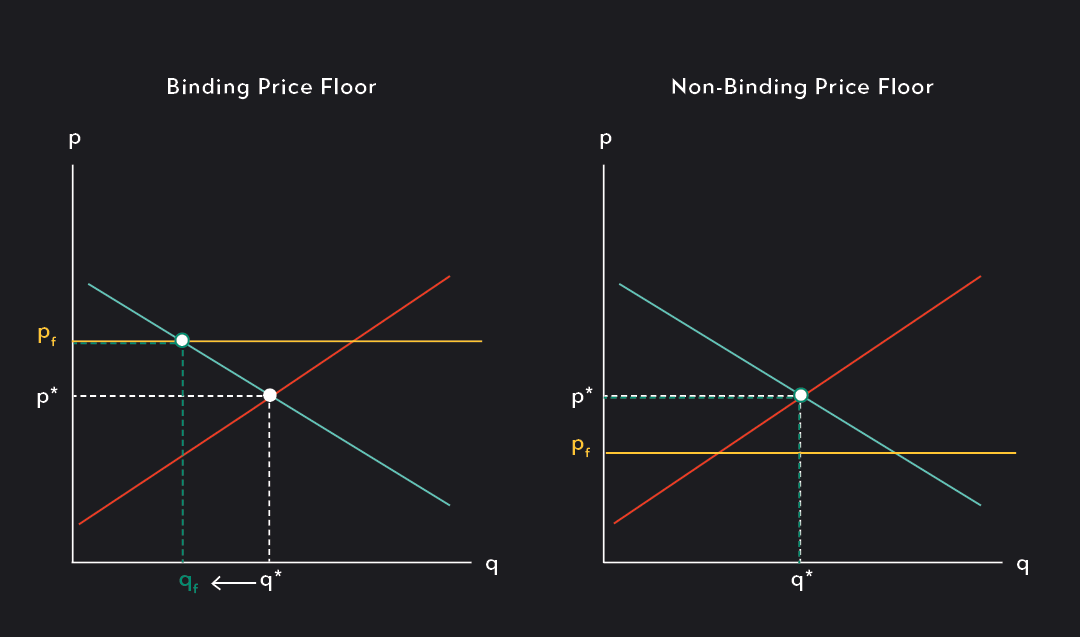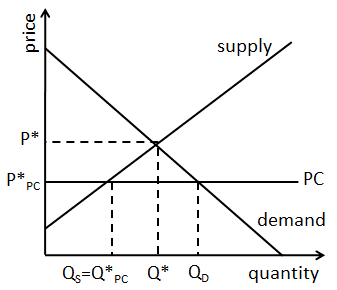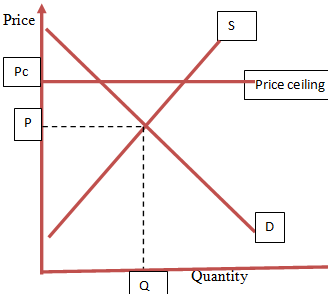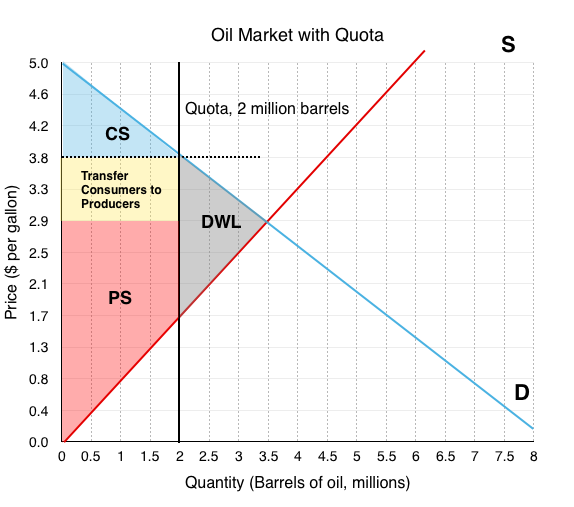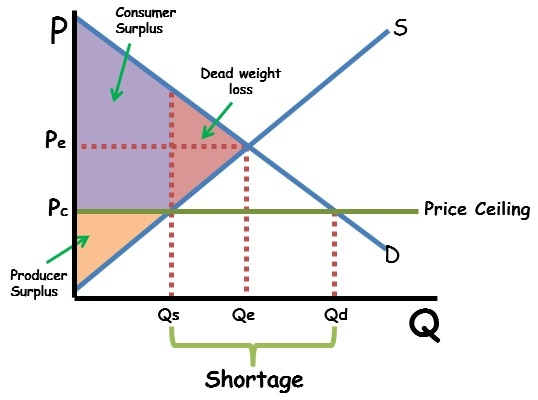
Price Controls
Until this point, we’ve only talked about markets where there is no government intervention, but what happens when the government steps in? Well, that’s where price controls come into play, of which there are two types. Even before we discuss these types, we must acknowledge that neither a ceiling nor a floor changes the supply or demand in that market – it’s just a matter of quantity.
A price ceiling establishes the maximum price that sellers are allowed to charge for a good. Policies like this are common in times of crisis – like a depression – where people may not be able to afford normal prices. India actually established a price ceiling on ridesharing platforms like Uber to prevent surge pricing during peak hours.
A price floor, on the contrary, is a minimum price that buyers are required to pay for a good or service. If you think back to history class, many price floors have been established for various crops in the US agricultural industry.
But, we aren’t done just yet. These price controls can be binding and non-binding. A price control is binding when it affects the market from reaching it’s natural equilibrium. For instance, if there was a price floor at $10 in a market where the equilibrium price is $5, quantity demanded would decrease and quantity supplied would increase, creating a surplus – that’s a binding price floor. In that same market, if you put a price floor at $4, it would have no impact on the equilibrium – that’s non-binding. The same can be said about price ceilings, just in the opposite direction; a binding price ceiling creates a shortage.
Source: Outlier, ThoughtCo, Study.com
In addition to price controls, there are also quantity controls, though they’re less common. A quota limits the quantity that is allowed to be supplied. Just like you draw a horizontal line and label it with price, you’d draw a vertical line with quantity. Quota rent is the difference between demand and supply price at the quota.
Don’t worry about CS and PS just yet, but be able to recognize that there’s a quota set at 2 million barrels of oil. The quota rent is $3.8 - $1.7 = $2.1 per gallon.
The DWL stands for deadweight loss, which is created when some mutually beneficial transactions don’t occur or non-beneficial transactions do occur. In this instance, the limits imposed on quantity are preventing the transactions in the gray triangle from going through. Notably, any market that is not in equilibrium will have DWL. Take a look at how the binding price ceiling below also creates DWL.
Source: ReviewEcon
Critics of price ceilings often point out that they lead to shortages, which is true. Often, producers who want to maintain the profit margins that they had in market equilibrium will lower the quality or quantity of their product or service. Sometimes, shortages result in black markets, overcharging people who couldn’t purchase the goods because of the shortage.
